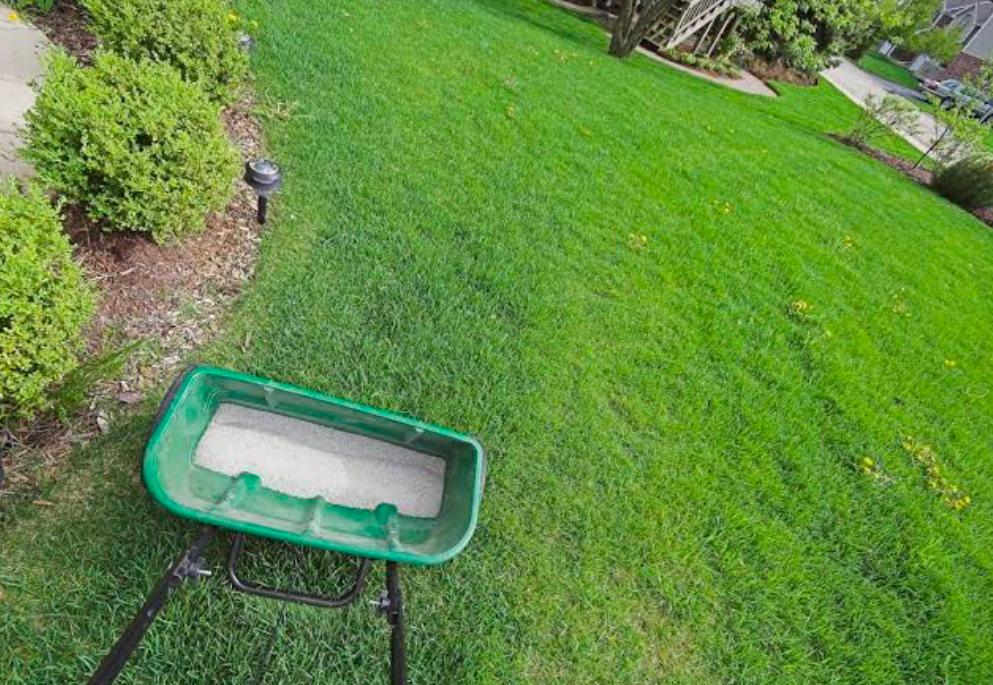Keeping your lawn healthy all year round is a full-time job, but with the fertilization tips in this guide, you can ensure long-term health with the right maintenance procedure.
Fertilizing Tips For Healthy Grass Revealed
Have you ever wondered if there are special fertilizing tips for grass development and maintenance that make some lawns better than others? Then, you’re thinking in the right direction because there are methods to achieve healthy lawn care.
Everyone wants lush, green, vibrant grass that’ll be the envy of others, and you can get this result by following the rules in this grass fertilization guide.
In this guide, you’ll learn all you need for quality lawn nutrient management, including the best timing, fertilizer types, grass types, soil testing, application methods, and common mistakes to avoid.
Understanding Your Grass Type and Its Nutrient Requirements
Before beginning lawn care management, you must understand that all grass types aren’t equal. The broad category of grass type identification is determined by seasons before testing the soil for nutrient needs.
Author’s Note: Check out our post on The Best Ornamental Grass Types for an in-depth look at ornamental grasses!
So, here’s each grass type and its fertilization needs.
Cool Season Grass
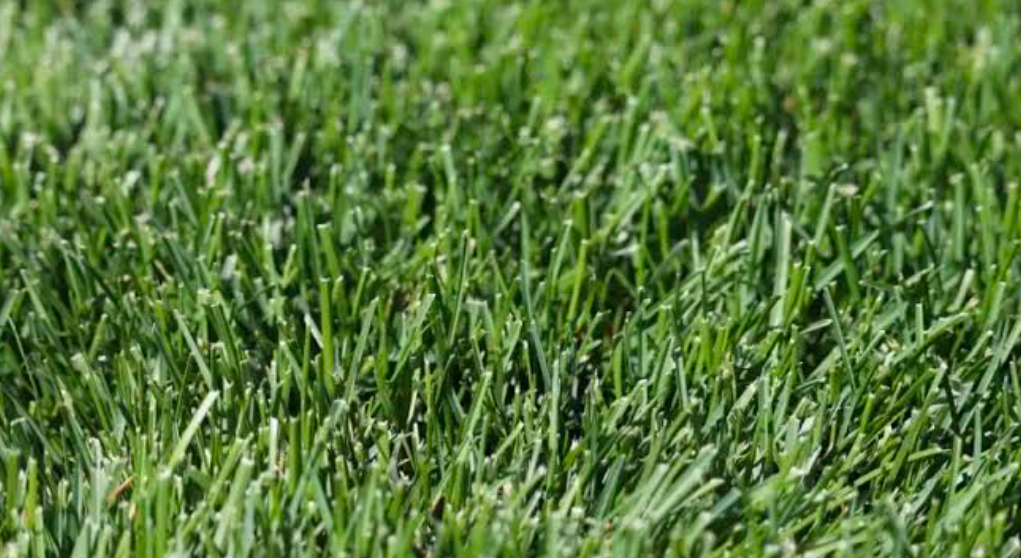
A fertilizer with a ratio like 10-0-20, 5-0-15, or similar (low N, high K, and little to no phosphorus unless a soil test shows you need it, more on testing later) is recommended as part of a balanced annual lawn care plan, especially in the late summer to fall winter prep application.
In spring or early summer, you’d typically use a fertilizer with more balanced nitrogen (like 20-0-10 or 16-4-8) to promote green growth. Much more on NPK fertilizer ratios later on in our guide, keep reading!
Warm Season Grass
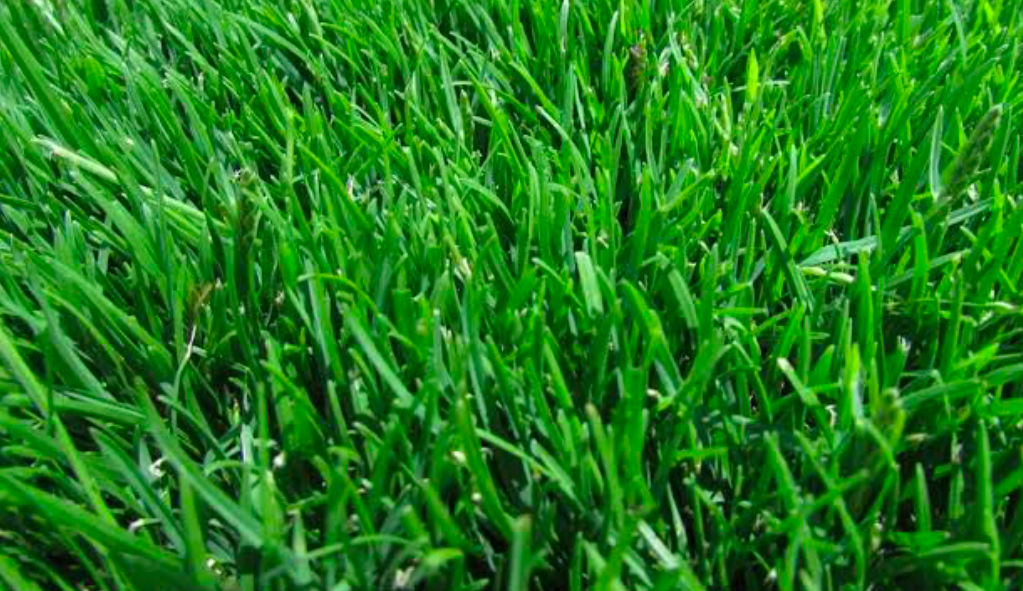
For warm-season grasses like Bermuda, Zoysia, and St. Augustine, fertilizers such as 20-0-10 work well during the growing season. The high nitrogen encourages dense, green growth, while moderate potassium boosts heat and drought tolerance.
Apply these fertilizers mainly in late spring and summer when the grass is actively growing, and reduce nitrogen as fall approaches to help the lawn prepare for dormancy. Phosphorus is usually omitted unless a soil test shows it’s needed.
The Crucial Role of Soil Testing in Lawn Fertilization
Knowing what’s happening beneath the surface through soil nutrient analysis is crucial to determining the ideal fertilization strategy.
This knowledge comes from conducting lawn soil testing to understand its existing pH levels, nutrient content, and overall health.
Once you identify specific deficiencies and imbalances hindering your soil’s healthy growth, it will determine the kind of fertilizer required to revive it.
Knowing the relationship between your soil pH and fertilization, here’s how you can determine its nutrient levels:
- Get a soil testing kit: For hands-on gardeners, buy a soil test kit from your local garden center and find the results immediately.
- Get results from local gardeners: You can also send soil samples to local gardeners or extension offices to help you test the nutrient levels and send you the results.
Author’s Note: For online options, check out the more accurate Mail-in Lab MySoil Soil Test Kit or the Convenient At-Home Rapitest Soil Test Kit, found on Amazon!
Do this test every few years to guarantee long-term lawn health by tracking changes and adapting to your soil’s needs.
After identifying your soil’s specific deficiencies and grass type, you must determine the current season to ensure the right fertilization strategy.
Perfect Timing: Seasonal Fertilization Strategies for Grass

Timing is critical to seasonal lawn fertilization as certain grasses thrive better in some weather than others. To maximize effectiveness, your fertilizing schedules should match seasonal growth patterns for different grass types.
Remember that the best time to fertilize grass depends on the vegetation type and growth cycle.
| Cool Season Grass | Early Spring and Fall |
| Warm Season Grass | Late Spring until early Summer |
Author’s Note: Check out our post on The Best Time To Fertilize Grass for an in-depth look at grass fertilization timing!
These seasonal fertilization tips aren’t recommendations but necessities because the wrong time application will be counterproductive. Summer heat stresses your lawn while Fall applications prepare your lawn for the cold winter. Also, avoid rainy seasons or days as it’ll waste your efforts by washing away the fertilizer.
Choosing the Right Fertilizer: Essential Nutrients and Formulations
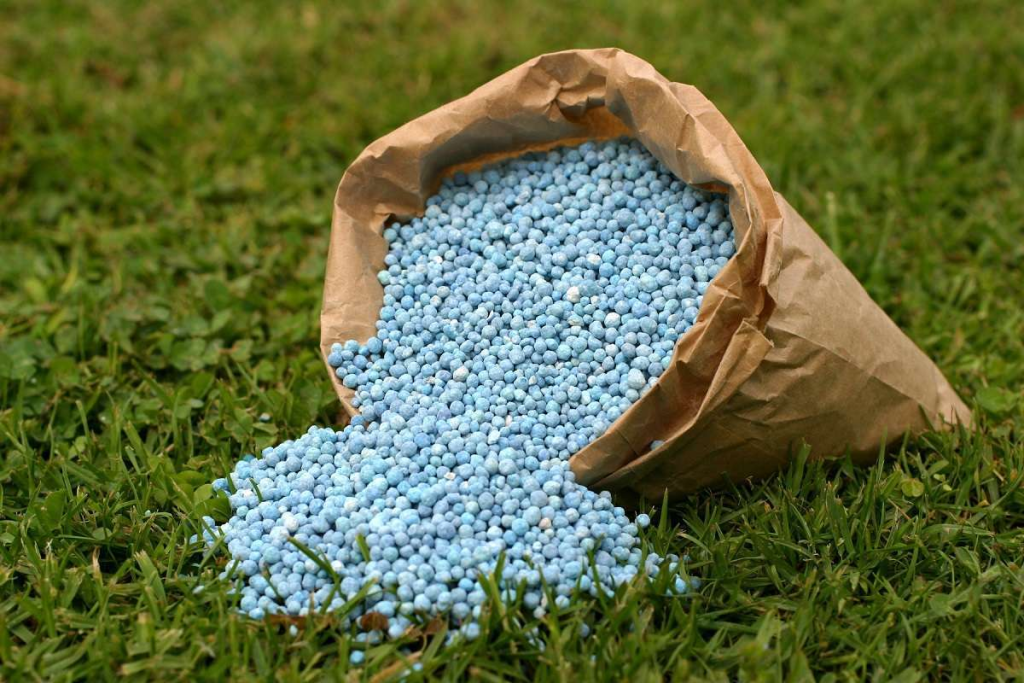
Figuring out the correct application form is the next step in this lawn fertilizer guide. Fertilizers can be liquid or granular, whether they’re organic or artificial.
Fertilizer Formulation
Granular fertilizers offer a slow release of nutrients over time, such that they gradually build your strength and health. Meanwhile, liquid fertilizers, often artificial, give rapid nutrient boosts to correct deficiencies quickly.
If you’re concerned more about your grass’s look, use liquid fertilizers while the granular form strengthens your soil.
N-P-K Ratios
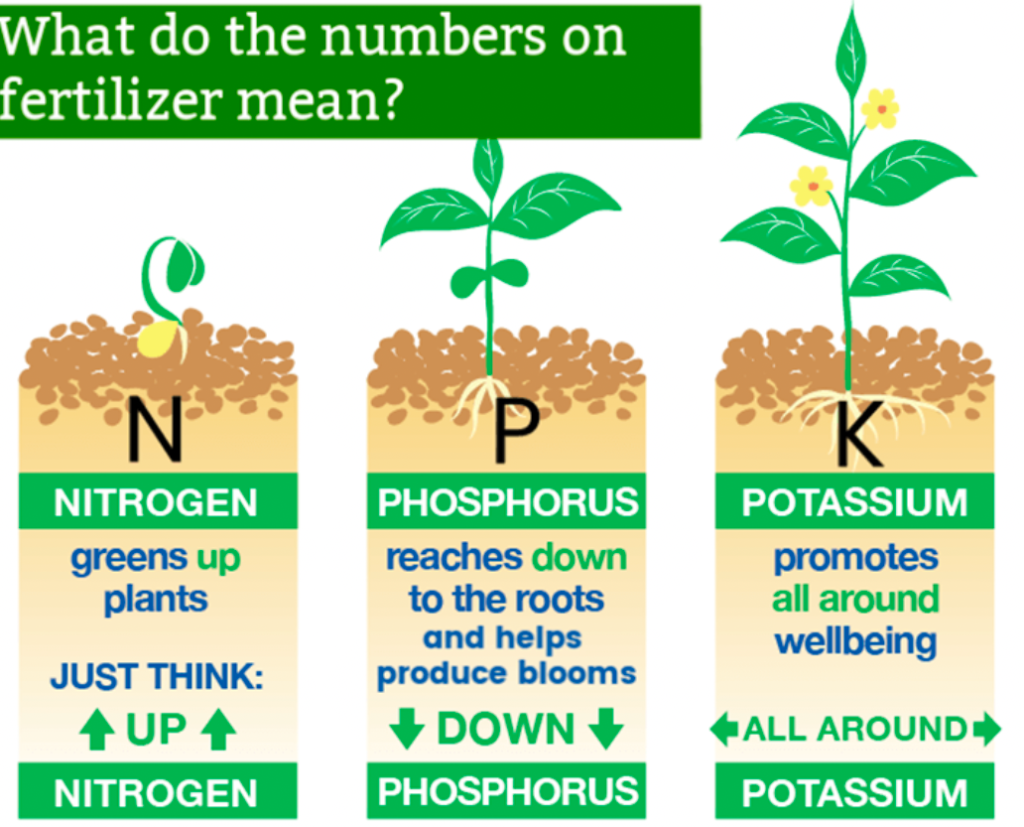
You can also categorize grass fertilizer types by nitrogen, phosphorus, and potassium (N-P-K) ratios.
The N-P-K ratio focuses on the nutrients critical to grass health.
Nitrogen aids green growth, Phosphorus builds stronger roots, and Potassium boosts immunity for disease resistance and overall grass health. So, knowing what each nutrient does helps you choose the correct ratio to heal your soil’s specific deficiency.
Author’s Note: Check out our post on The Best Lawn Fertilizer For Green Grass Guide for even more help choosing the right lawn fertilizer!
Effective Fertilizer Application Techniques for Even Coverage
Even when you get the right fertilizer and understand your lawn’s needs, you must follow these fertilizer application tips to ensure maximum success. They’ll ensure even lawn fertilizing and avoid common issues like streaks and patchy growth or fertilizer burn.
Lawn spreader techniques vary based on fertilizer types and lawn size.
Granular Fertilizer Spreading

Found On Amazon
Broadcast spreaders for wide-range applications are game-changers for granular feeders. You’d get consistent coverage with little hassle.
Liquid Fertilizer Spreading
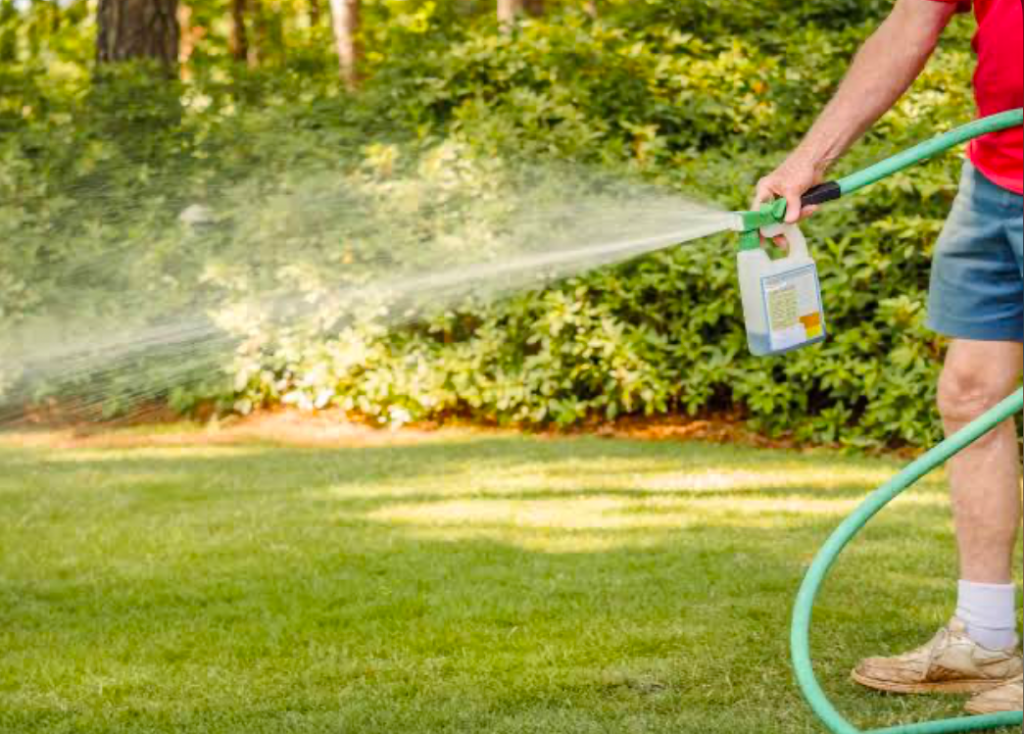
For liquid fertilizers, a hose with a sprayer attachment or standalone pump sprayer does the trick. It covers large areas and reduces the risk of unintentional bald spots.
Timing
Avoid windy days and ensure the grass is dry before application to allow better bonding with the fertilizer. Also, note that windy days make application difficult by blowing away the granular material or misdirecting the sprayed liquid.
Organic vs. Synthetic Fertilizers: Which is Best for Your Lawn?

Because there’s no one-size-fits-all in fertilizing damaged lawns, you should compare organic and synthetic fertilizer pros & cons before choosing your fertilizer.
Organic Fertilizer
With organic lawn fertilizers derived from natural sources like compost, bone meal, and manure, you’d improve your soil’s health over time. Their slow nutrient release reduces the risk of leaching, but that means more application and less concentration.
Check out Espoma Organic All Season Lawn Fertilizer which helps build a showcase worthy, thick, green lawn naturally. If you care about eco-friendly lawn care, it’s your best bet.
Synthetic Fertilizer
On the flip side, synthetic fertilizers are fast-acting products. They allow for quick nutrient-specific repairs, but have their disadvantages too. Their high chemical concentration often leads to runoff and soil degradation.
So the choice ultimately comes down to what best suits your lifestyle and lawn. Weigh your values against your maintenance capacity and lawn health priorities.
Common Lawn Fertilization Mistakes and How to Avoid Them
Season gardeners still make common fertilization mistakes like over-fertilization, incorrect timing, or ignoring soil testing, so how much more likely are beginners? Luckily, this guide contains practical tips for avoiding these lawn care errors.
| Errors | Prevention |
| Improper Application | Follow the instructions on the fertilizer package. |
| Overfertilization | More isn’t always better, so fertilize your lawn according to its nutrient needs. |
| No Soil Testing | Understand your soil’s needs to administer the right nutrients for recovery |
| Poor Time | Follow a seasonal lawn fertilization schedule |
| Inadequate Watering | Aid nutrient absorption by watering your lawn after fertilizing the dry grass and soil. |
Proper application is the best means of avoiding fertilizer burn.
How to Recognize When Your Grass Needs Fertilizer
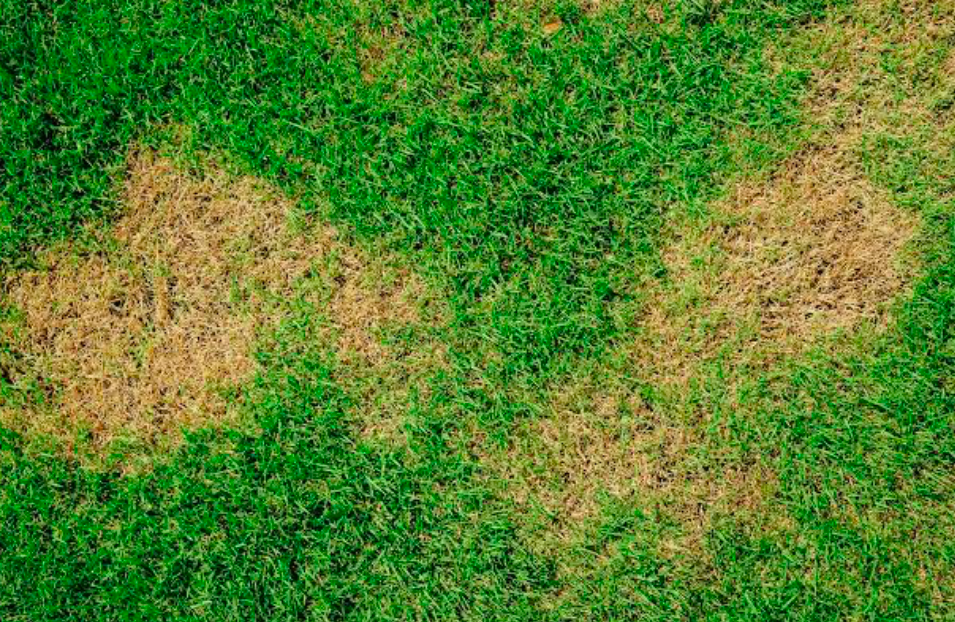
Can you identify when your lawn is craving fertilization? Do you know the lawn health indicators so you can use their absence as a deficiency sign?
Some visible signs that a grass needs fertilizer include:
- Discoloration: If your grass is a pale green instead of the rich, vibrant green hue common to healthy lawns, then it needs a Nitrogen infusion.
- Thinning: Sparse patches are signs of uneven fertilization and distressed lawns.
- Increased Weeds: You shouldn’t mow your lawn too often because that means weeds keep popping up. If weeds overrun your grass, then it’s time to fertilize the soil and stunt their growth.
You can now spot nutrient deficiency in grass like an expert. So, here are some post-fertilization tips to preserve your hard work.
Essential Post-Fertilization Lawn Care Tips
The crux of post-fertilization lawn care is to perfect the lawn feeding process through some maintenance. It ensures you seamlessly bond the fertilizer to the grass or soil for optimal results.
You know some lawn care maintenance tips, but may not realize their essence. So, let’s cover the essentials now:
Watering
Adequate watering after fertilizing dissolves granular fertilizers and allows them to penetrate the soil down to the roots.
Aim towards light watering immediately after application to activate the fertilizer and prevent runoff. Keep the grass moist but not waterlogged as the weeks progress to avoid stressing your grass.
Mowing
Adjust your mower’s height so that you don’t remove all the new growth that sprouts from your fertilizer’s activation. 2 – 3 inches above ground is ideal for encouraging new growth and keeping your lawn healthy.
General Lawn Maintenance
Don’t forget general lawn maintenance like removing debris from the grass with rakes and keeping it clean and healthy.
DIY Fertilizer Recipes for a Natural, Healthy Lawn
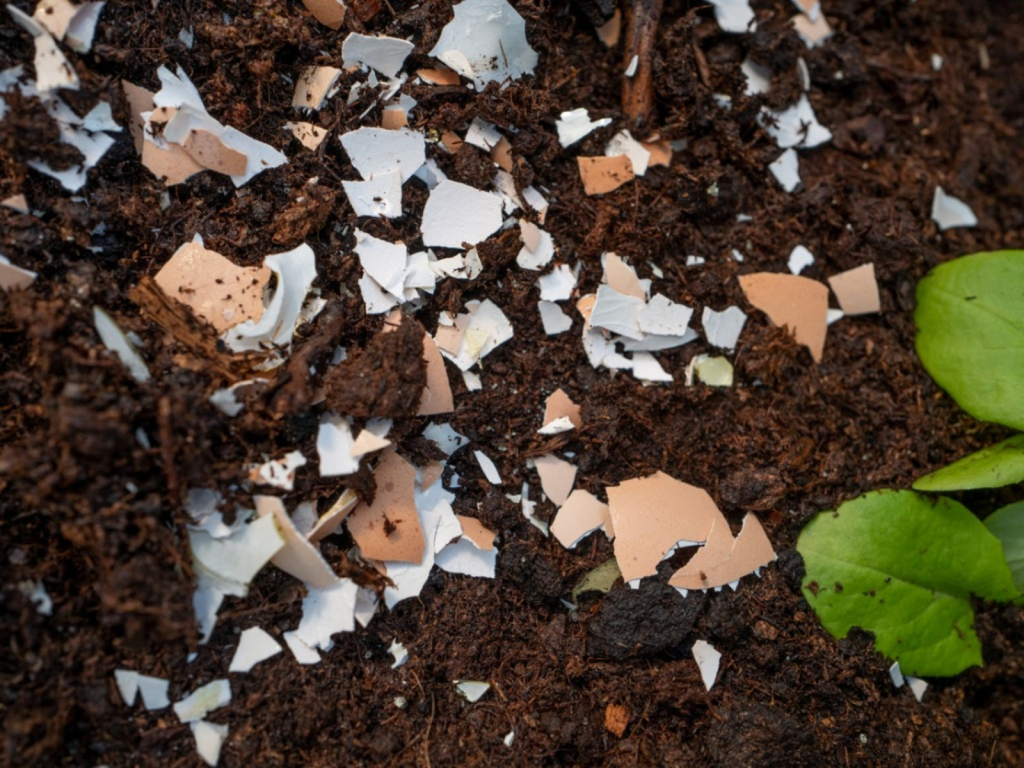
As someone who loves a good DIY project, you can make your organic lawn feeder. DIY lawn fertilizer is simple, effective, eco-friendly, customized, and budget-friendly, so why snooze on it?
Everyday household items you can use to make homemade fertilizer recipes are coffee grounds, compost, tea, and eggshells.
- Combine equal parts coffee grounds and crushed eggshells for nitrogen and calcium nutrients.
- Steep compost in water for three to five days to make compost tea as your liquid organic fertilizer.
Be careful with natural grass care, though, because being organic doesn’t mean it can’t be too much. Use your fertilizer in moderation.
Conclusion: Achieving a Vibrant, Healthy Lawn through Proper Fertilization
Mastering the art of healthy lawn fertilization is about having green grass and maintaining your soil’s integrity. Tailored fertilization after learning about your lawn through soil testing and other methods leads to vibrant grass care.
Time your applications, select the right fertilizer in form and content, do your best to avoid common pitfalls, and practice after-care for lasting lawn care success.

